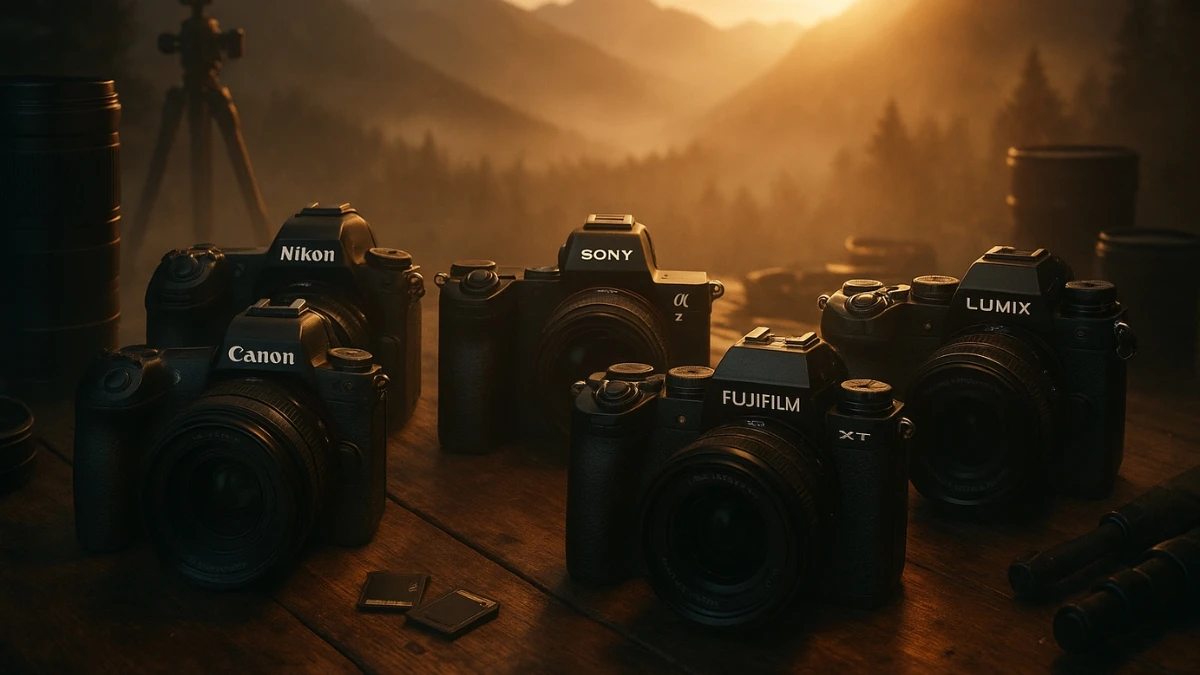Top 5 Best Camera Brand for Photography in 2025
As photography continues to evolve, the camera brands leading the industry are consistently pushing the boundaries of innovation, quality, and performance.
Whether you're a professional photographer or an enthusiast looking to upgrade your gear, choosing the right camera brand is essential for capturing stunning images.
In 2025, several camera brands stand out for their exceptional features, reliability, and versatility. From mirrorless models to DSLR options, these top brands offer the best in technology and craftsmanship, ensuring you have the tools you need to take your photography to the next level. Let's dive into the top 5 best camera brands for photography in 2025.
| Rank | Camera |
|---|---|
| 5 | Panasonic Lumix S5 IIX ($2,200) |
| 4 | Fujifilm X-T5 ($1,700) |
| 3 | Nikon Z8 ($4,000) |
| 2 | Sony α7 IV ($2,500) |
| 1 | Canon EOS R5 Mark II ($4,300) |
5. Panasonic/Lumix
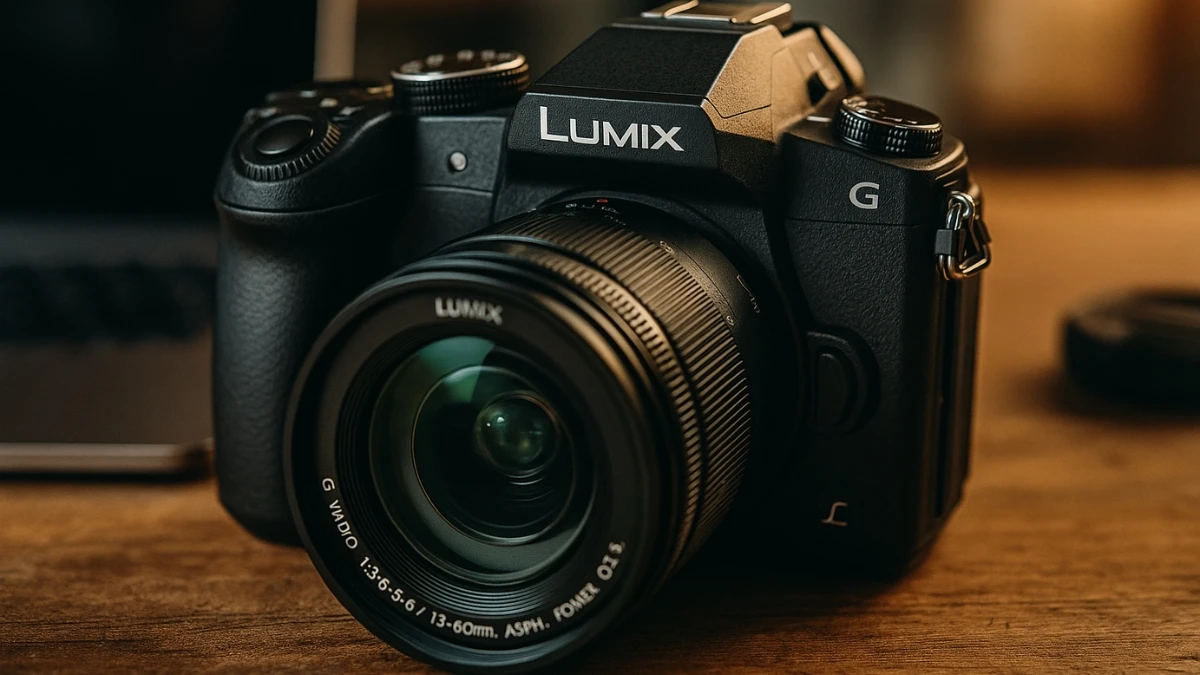
Market Position: Video-focused specialist with growing influence
Panasonic has established itself as the go-to brand for photographers and videographers who prioritize video capabilities.
While they may not have the market share of the "big three," Panasonic Lumix cameras consistently offer exceptional value and professional-grade video features that often surpass more expensive competitors.
The brand has pioneered many video-centric features that have become industry standards.
Why Panasonic Earns Recognition?
- Video Leadership: Panasonic was among the first to offer 4K video recording in consumer cameras and continues to lead in professional video features. Their cameras often include features like unlimited recording time, professional codecs, and advanced video-focused tools.
- Micro Four Thirds System: Panasonic's commitment to the Micro Four Thirds format provides photographers with a wide selection of compact, high-quality lenses from both Panasonic and partner manufacturers like Olympus.
- Value Proposition: Panasonic cameras typically offer more features per dollar than competitors, making them attractive to budget-conscious photographers and videographers who need professional capabilities.
- Innovation History: Panasonic introduced the world's first mirrorless interchangeable-lens camera, demonstrating their commitment to pushing the industry forward.
Standout 2025 Models
- Panasonic Lumix S5 IIX ($2,200): A full-frame hybrid camera that excels at both photography and videography, offering excellent image stabilization and professional video features at a competitive price.
- Panasonic Lumix GH7 ($2,200): The latest in their video-focused GH series, featuring cutting-edge video specifications and broadcast-quality recording capabilities.
- Panasonic Lumix G9 II ($1,700): The flagship Micro Four Thirds camera, offering excellent still photography capabilities with the benefits of a compact system.
| Model | Price |
| S5 IIX | $2,200 |
| GH7 | $2,200 |
| G9 II | $1,700 |
Best For
Panasonic is ideal for video content creators, hybrid shooters on a budget, travel photographers who prioritize portability, and anyone who needs professional video features without the professional price tag.
4. Fujifilm
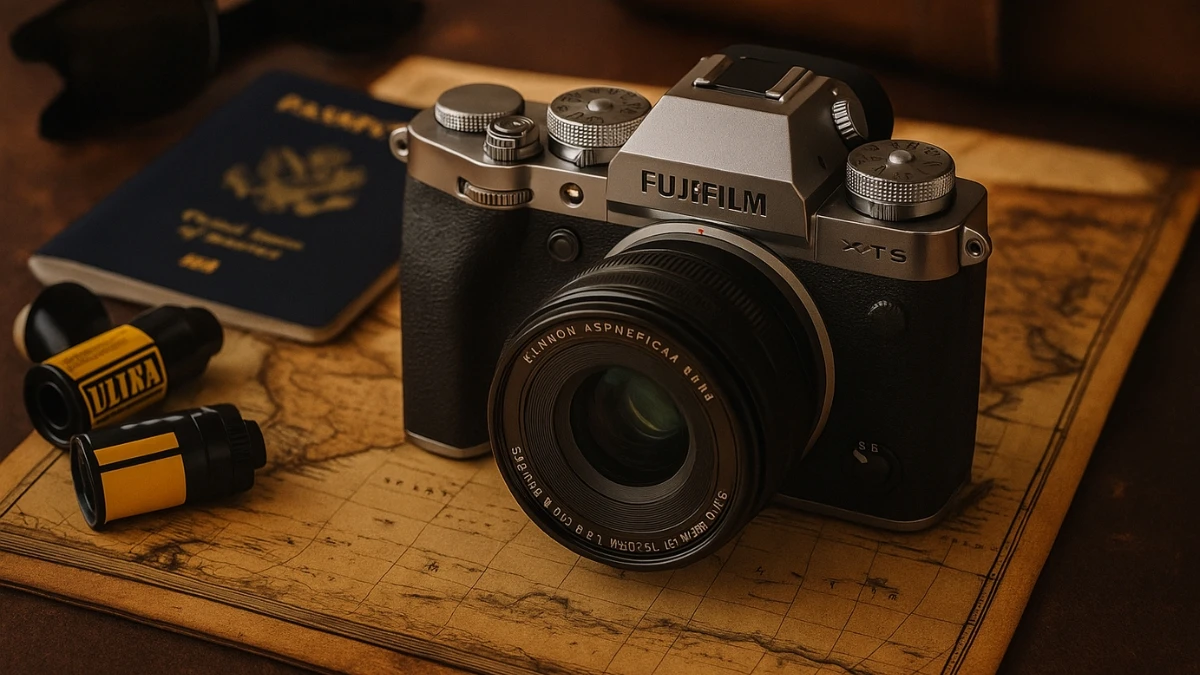
Market Position: Premium specialist with 5.8% market share
Fujifilm brings a unique perspective to digital photography, combining their century-plus heritage in film photography with cutting-edge digital technology.
The company has carved out a distinctive niche by focusing on APS-C sensors, exceptional JPEG processing, and cameras that prioritize the photography experience over pure specifications.
Fujifilm cameras are beloved by photographers who value image character, tactile controls, and creative expression.
Why Fujifilm Shines?
- Film Heritage and Color Science: Fujifilm's legendary film emulsions have been translated into digital Film Simulation modes that produce some of the most beautiful JPEG images straight out of camera. These color profiles emulate classic film stocks like Velvia, Provia, and their newer innovations.
- APS-C Excellence: Rather than competing in the full-frame race, Fujifilm has perfected the APS-C format, creating cameras and lenses that offer excellent image quality in more compact, affordable packages.
- Tactile Experience: Fujifilm cameras feature physical dials for aperture, shutter speed, and ISO, providing a hands-on shooting experience that many photographers find more engaging than menu-driven systems.
- JPEG Quality: Fujifilm cameras produce exceptional JPEG files that often require minimal post-processing, making them ideal for photographers who prefer to get great images straight out of camera.
Standout 2025 Models
- Fujifilm X-T5 ($1,700): Features an impressive 40.2MP APS-C sensor in a beautifully designed body with classic controls. It's perfect for enthusiast photographers who want maximum resolution in a portable package.
- Fujifilm X100VI ($1,600): The latest in Fujifilm's popular premium compact series, featuring a 40MP sensor and the beloved 23mm f/2 lens. Despite being frequently sold out due to social media popularity, it remains one of the most desirable cameras for street photography.
- Fujifilm X-H2 ($2,000): Designed for professional and hybrid shooters, offering the same 40MP sensor as the X-T5 but in a larger body with enhanced video capabilities and better ergonomics for studio work.
| Model | Price |
| X-T5 | $1,700 |
| X100VI | $1,600 |
| X-H2 | $2,000 |
Best For
Fujifilm is perfect for enthusiast photographers, street photographers, and anyone who values the photographic experience as much as the final image. It's also excellent for photographers who prefer smaller, lighter camera systems without sacrificing image quality.
3. Nikon
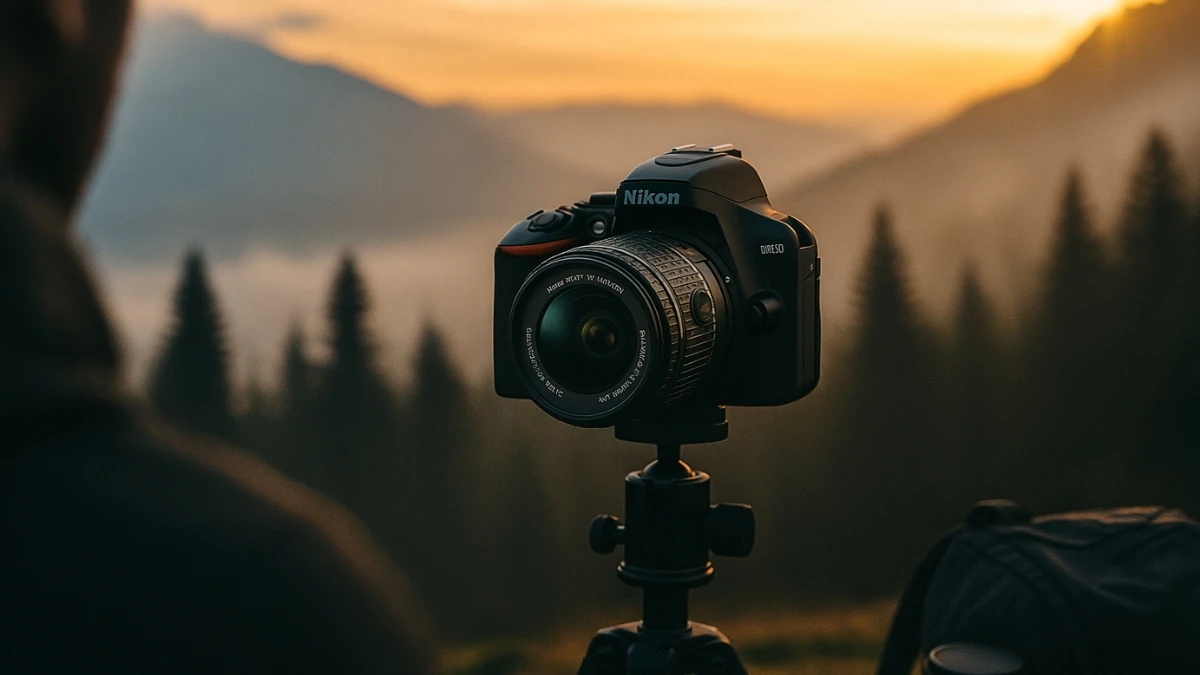
Market Position: Solid third with 11.7% market share, gaining momentum
Nikon's legacy in photography stretches back over a century, with the company originally founded in 1917 as Nippon Kogaku K.K.
While Nikon was slower to embrace the mirrorless revolution compared to Sony, they've made remarkable strides in recent years with their Z-mount system.
The brand maintains a devoted following among professional photographers who value Nikon's exceptional color science, build quality, and optical excellence.
Why Nikon Stands Strong?
- Optical Heritage: Nikon's reputation for creating some of the world's finest lenses is unmatched. Their color science and image rendering have a distinctive, pleasing quality that many photographers prefer over the clinical precision of other brands.
- Recent Innovation: The Nikon Z6 III has been praised as one of the standout stills cameras of 2025, combining speed, performance, and image quality in an intuitive package. Nikon has successfully modernized their offerings while maintaining the characteristics that made them legendary.
- Build Quality: Nikon cameras are built like tanks. Professional models feature extensive weather sealing and are designed to function reliably in extreme conditions, making them favorites among photojournalists and outdoor photographers.
- Professional Legacy: Many of the world's most famous photographs were captured with Nikon cameras. This heritage continues today with cameras trusted by National Geographic photographers, sports journalists, and fine art photographers worldwide.
Standout 2025 Models
- Nikon Z8 ($4,000): An absolute powerhouse combining flagship features in a more compact and affordable package than the Z9. It offers 45.7MP resolution, 8K video, and professional-grade performance.
- Nikon Z6 III ($2,500): Praised as the standout stills camera of 2025, offering excellent balance of resolution, speed, and image quality with intuitive handling that makes it a joy to use.
- Nikon Z fc ($1,100): A retro-styled camera that combines modern mirrorless technology with classic film camera aesthetics, perfect for enthusiasts who appreciate both form and function.
| Model | Price |
| Z8 | $4,000 |
| Z6 III | $2,500 |
| Z fc | $1,100 |
Best For
Nikon is ideal for photographers who prioritize image quality, color accuracy, and build quality. It's particularly well-suited for landscape photography, portraiture, and any situation where you need a camera that will perform reliably for years to come.
2. Sony

Market Position: Strong second with 26.1% global market share
Sony has transformed from an electronics company into one of the most respected camera manufacturers in the world.
Since entering the camera market seriously in the 1980s, Sony has become synonymous with cutting-edge technology and innovation.
The company's Alpha series has consistently pushed the boundaries of what's possible in digital photography, particularly in the mirrorless camera segment where Sony was an early pioneer.
Why Sony Excels?
- Mirrorless Innovation: Sony essentially created the modern full-frame mirrorless camera market with the original α7 series. Today, their cameras continue to set the standard for electronic viewfinder quality, in-body image stabilization, and compact form factors.
- Autofocus Excellence: Sony's Real-time Eye AF and subject tracking are considered the best in the industry. The system can reliably track humans, animals, birds, and even vehicles with remarkable precision, making it invaluable for portrait and wildlife photographers.
- Sensor Technology: As the world's largest manufacturer of image sensors, Sony has access to the latest sensor technology before anyone else. Many competing camera brands actually use Sony-manufactured sensors in their cameras.
- Video Capabilities: Sony cameras excel at hybrid shooting, offering professional-grade video features like 4K recording, S-Log profiles, and advanced codec options that appeal to content creators and filmmakers.
Standout 2025 Models
- Sony α7 IV ($2,500): The best all-around hybrid camera available, featuring a 33MP full-frame sensor, excellent 4K video capabilities, and outstanding low-light performance. It's perfect for photographers who occasionally shoot video or content creators who prioritize still image quality.
- Sony α7R V ($3,900): The resolution king with a staggering 61MP sensor, designed for landscape photographers, studio work, and anyone who needs maximum detail and cropping flexibility.
- Sony α6700 ($1,400): The top APS-C option, offering professional features in a compact body with excellent battery life and robust build quality.
| Model | Price |
| α7R V | $3,900 |
| α7 IV | $2,500 |
| α6700 | $1,400 |
Best For
Sony cameras are perfect for hybrid shooters who need excellent performance in both photography and videography. They're also ideal for tech enthusiasts who appreciate cutting-edge features and photographers who frequently shoot in challenging lighting conditions.
1. Canon
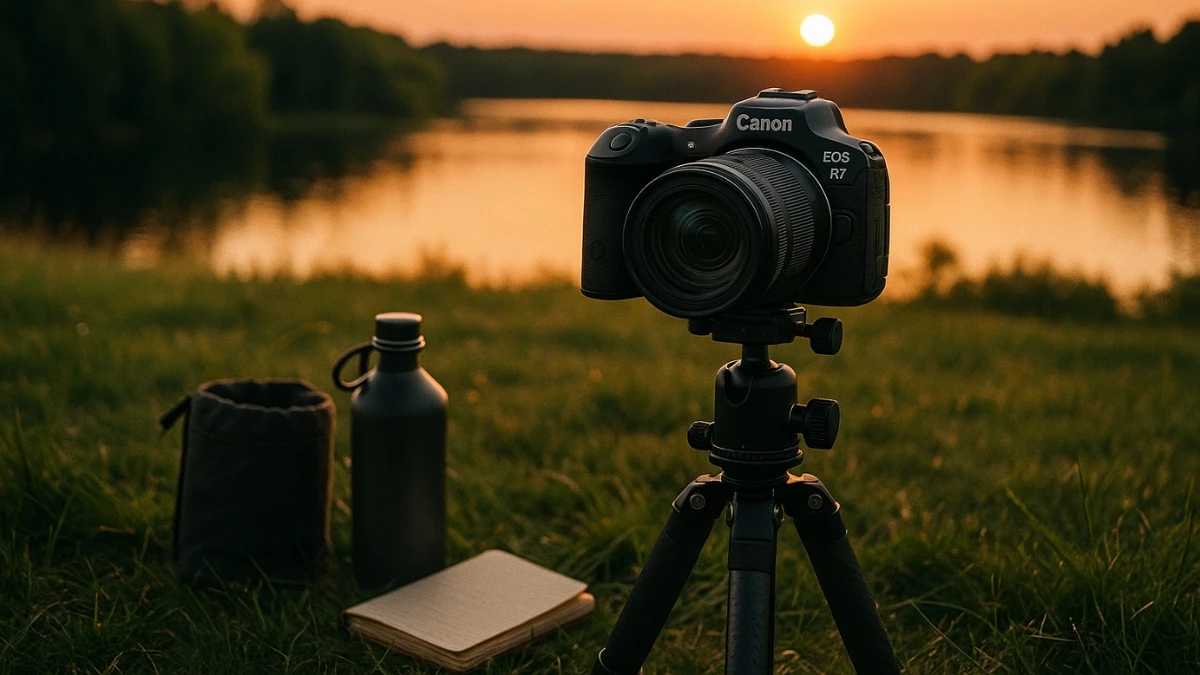
Market Position: Dominant global leader with 46.5% market share
Canon continues to reign supreme in the camera world, maintaining its position as the most popular camera brand globally despite fierce competition from Sony and Nikon.
The Japanese giant has dominated the digital camera market consistently, accounting for nearly half of all camera sales worldwide.
This remarkable market dominance isn't just about legacy reputation—Canon has earned its position through decades of innovation, reliability, and an unmatched ecosystem of lenses and accessories.
Why Canon Leads the Pack?
- Comprehensive Product Range: Canon offers something for everyone, from the budget-friendly EOS R100 at $400 to the professional EOS R1 flagship exceeding $6,000. This extensive lineup ensures photographers can grow within the Canon ecosystem without ever feeling limited by their camera choice.
- Innovation Legacy: Canon has been a pioneer in digital camera technology since the 1930s, introducing groundbreaking features like the first camera with a built-in microcomputer and eye-controlled autofocus systems. In 2025, they continue this tradition with advanced computational photography features and industry-leading dual-pixel autofocus technology.
- Lens Ecosystem: Perhaps Canon's greatest strength is its vast selection of native RF-mount lenses, complemented by extensive EF-mount compatibility through adapters. Third-party manufacturers like Sigma and Tamron also provide excellent options, giving photographers unparalleled choice in glass selection.
- Build Quality and Ergonomics: Canon cameras are renowned for their intuitive controls and robust construction. Professional models feature weather sealing and are built to withstand the rigors of daily professional use.
Standout 2025 Models
- Canon EOS R5 Mark II ($4,300): The ultimate professional hybrid camera, featuring 45MP resolution, 8K video recording, and blazing-fast autofocus. It's the camera of choice for wedding photographers, sports journalists, and content creators who need uncompromising performance.
- Canon EOS R6 Mark II ($2,500): The sweet spot for enthusiast photographers, offering 24MP resolution, excellent low-light performance, and up to 40fps burst shooting. This camera delivers professional-grade features at a more accessible price point.
- Canon EOS R10 ($980): An excellent entry point into Canon's mirrorless system, featuring a 24.2MP APS-C sensor and 4K video capabilities in a compact, lightweight body.
| Model | Price |
| EOS R5 Mark II | $4,300 |
| EOS R6 Mark II | $2,500 |
| EOS R10 | $980 |
Best For
Canon is ideal for photographers who value reliability, extensive lens selection, and excellent customer support. Whether you're shooting portraits, landscapes, wildlife, or events, Canon's diverse lineup ensures you'll find the perfect camera for your needs.
Key Factors to Consider When Choosing Your Brand
Photography Style Matching
Portrait and Studio Work: Canon and Sony full-frame cameras excel here, offering excellent dynamic range, precise autofocus, and extensive lens selections for portrait photography. The larger sensors provide beautiful background blur and exceptional low-light performance.
Landscape Photography: Nikon and Canon are traditional favorites for landscape work, known for their excellent color science and dynamic range. High-resolution options like the Sony α7R V and Fujifilm X-T5 also provide exceptional detail for large prints.
Street Photography: Fujifilm cameras are particularly popular among street photographers for their compact size, quiet operation, and film-like image quality. The classic controls and premium compact options make them ideal for discrete photography.
Wildlife and Sports: Canon and Sony dominate this category with their fast autofocus systems, high burst rates, and extensive telephoto lens selections. These cameras can track moving subjects reliably and provide the reach needed for distant subjects.
Video Content Creation: Sony and Panasonic lead in hybrid capabilities, offering professional video features, excellent autofocus during recording, and codec options that work well for both casual and professional video production.
Budget Considerations
- Entry Level ($400-800): Canon EOS R50, Sony α6000 series cameras, and Panasonic G-series options provide excellent entry points into serious photography without breaking the bank.
- Enthusiast Level ($800-2000): This range includes cameras like the Sony α7 IV, Fujifilm X-T5, and Canon EOS R6 Mark II—cameras that can satisfy most photographers' needs for years to come.
- Professional Level ($2000+): High-end options like the Canon R5 Mark II, Sony α7R V, and Nikon Z8 offer cutting-edge features and build quality for demanding professional use.
Lens Ecosystem Importance
- Most Extensive Selection: Canon and Sony offer the widest range of native and third-party lenses, providing options for virtually any photographic need.
- Best Value Options: Micro Four Thirds systems (Panasonic/Olympus) offer excellent lens selection at generally lower prices due to the smaller sensor format.
- Premium Quality Focus: Nikon Z-mount and Fujifilm X-mount lenses are known for exceptional optical quality, often representing the pinnacle of lens design within their respective systems.
Size and Portability
- Maximum Portability: Fujifilm and Panasonic Micro Four Thirds systems offer the most compact and lightweight options without major compromises in image quality.
- Professional Size: Canon and Nikon offer larger cameras that provide better ergonomics for professional use and longer battery life.
- Balanced Approach: Sony's α7 series strikes an excellent balance between compact size and professional features.
Making Your Final Decision
Choosing the best camera brand ultimately depends on your specific needs, shooting style, and long-term goals in photography. Each of these five brands excels in different areas, and all produce cameras capable of creating stunning images in the right hands.
Consider Your Growth Path: Think about where you want to be as a photographer in five years. Investing in a system with room to grow—both in terms of camera bodies and lens selection—will serve you better than choosing based solely on current needs.
Test Before You Buy: If possible, visit a camera store and handle different models. The camera that feels right in your hands and matches your shooting style is often more important than specifications on paper.
Factor in Total System Cost: Remember that lenses, batteries, memory cards, and accessories add significantly to your initial investment. A more expensive camera body might actually be more economical if it has better lens options or longer-lasting accessories.
Read Current Reviews: Camera technology evolves rapidly. While this guide provides current information, always check the latest reviews and comparisons for specific models you're considering.
Disclaimer
The rankings and camera models listed in this guide are based on the most current information available as of 2025. Prices and availability may vary depending on location and retailer. The choice of a camera depends on individual preferences, needs, and budget. Always conduct thorough research and consult up-to-date reviews before making a purchasing decision. Prices listed are approximate and subject to change. The author and publisher are not responsible for any inaccuracies or changes in product features or pricing.

